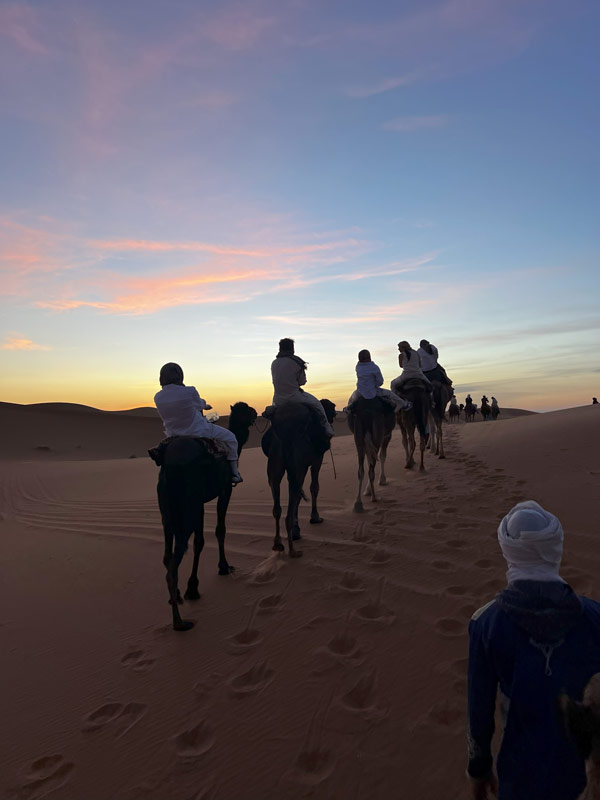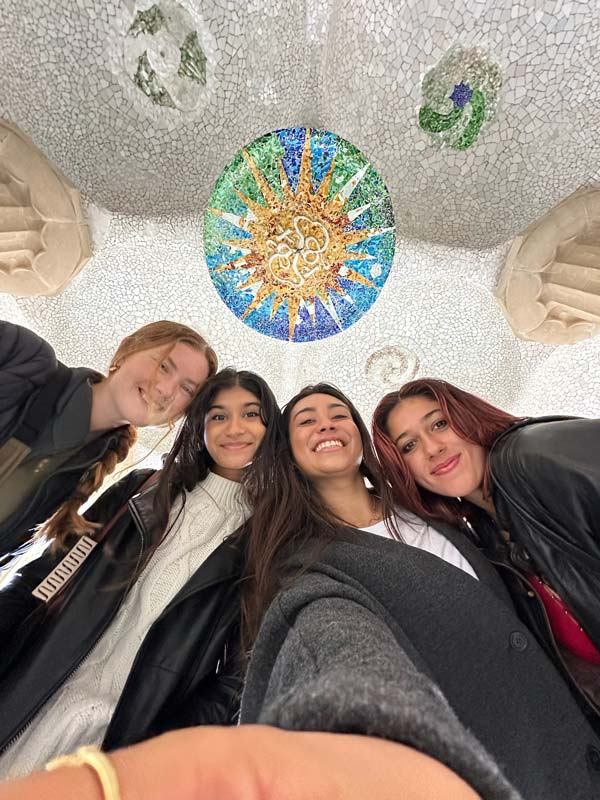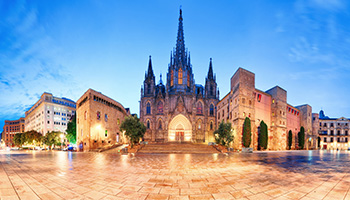Alumni Spotlight: Tarini Padmanabhan, CEA CAPA Barcelona Study Abroad Program
Tarini Padmanabhan is a CEA CAPA Alumni Insider and a student at the University of California-Berkley pursuing a degree in Biology. An alum of CEA CAPA, she studied abroad in Barcelona, Spain, during Spring 2024. Below, she shares her tips and tricks for preparing for a semester in Barcelona, along with some of her favorite places to visit in the city.
What are the top five essential items every student should pack for their study abroad experience with CEA CAPA?
My top five essentials for study abroad are:
A travel backpack: One that adheres to the guidelines of budget European airlines like Ryanair, Easyjet, and Vueling was incredibly helpful for weekend trips to other countries.
Extra medication
Noise canceling headphones: These are helpful for those flights and for doing work around the city at coffee shops or even at the CEA CAPA Study Center.
A reusable water bottle: There aren’t many places to fill up water around cities in Europe so carrying a reusable water bottle helped me stay hydrated, especially with walking around so much and traveling.
Converters/Adaptors: These are extremely necessary for studying abroad, especially ones that are universal. They saved me from needing to get several adapters for when I traveled to other countries.

My friends on a day trip to Montserrat
Can you share the packing tips you found particularly helpful during your time abroad?
- Pack clothing you will actually wear. Sometimes people choose not to bring sweatpants or clothes that they might deem not trendy for Europe but after several weeks, you will miss wearing the clothing items you wear most at home.
Pack lighter than usual. Even if you don’t intend to buy more clothes in Europe, you probably will buy things like clothes, souvenirs, and more. Those will fill up your suitcase pretty quickly when it comes time to come home.
Travel-sized toiletries will be your best friend. When you’re traveling on weekends and doing so on a budget, travel-sized toiletries will help you fit everything into a backpack.

Myself and a couple friends in Malta while on Spring Break
What type of luggage would you recommend for students preparing for their study abroad program?
I would definitely recommend some bigger suitcases, a travel backpack, and a small carry on. The bigger suitcases are necessary for packing and for being able to bring everything back to the US when that time comes. As I mentioned earlier, the travel backpack is especially helpful for weekend trips and can fit a surprising amount of clothes in it. I was able to pack for a five-day trip to Morocco using just my travel backpack. Lastly, a small carry-on suitcase is definitely a must for any longer trips like spring break. I would just urge students to check the dimensions of their carry-ons before-hand to make sure they adhere to the guidelines of the frequently used airlines in Europe. The typical suitcase size in Europe is smaller than those in America.

Me in the Sahara Desert of Morocco
Are there any packing hacks you used to maximize space in your luggage?
- Roll your clothes: Instead of folding, roll your clothes. This helped me save space and prevent wrinkles.
- Utilize compression bags: These are great for reducing the volume of larger items like jackets.
Pack with layers: Choose clothing that can be layered and combined in different ways.
Wear bulkier items: If you are bringing bulkier items like shoes, coats, or jeans, try to wear them during your flight to save space in your luggage.
Embrace a capsule wardrobe: Pick clothes that go well together and that can match easily.
Make a packing list: Write down everything you need to pack ahead of time to make sure you don’t forget anything. It also helps you how much you’re bringing and if you don’t need something.

Me at the Rolex Monte Carlo Masters Tennis Tournament in Monaco

My friends riding camels in the Sahara Desert at sunset
Can you share any insights on packing for cultural considerations in your host country?
Think about the culture and dress codes of your host country so you don’t accidentally offend anyone or stand out too much. Take the time to do some research on what people typically wear there. In some places, you might need to dress more conservatively, especially if you’re visiting a religious site. On the other hand, some countries are more relaxed about what you wear, so you could get away with more casual clothes there.
Also, keep in mind the weather in mind; light fabrics for hot places, and layering pieces for locations where the weather changes a lot. And don’t forget nice outfits for more formal settings like school events or internships!

A picture of myself and a couple of friends while we explored Parc Güell
What were your favorite coffee shops in Barcelona, and what made them stand out?
Through this past semester, I went to over twenty different coffee shops in Barcelona as a way to explore the city and enjoy one of my favorite drinks. Through my exploration, I found three coffee shops that made it to the top of my list: T44 in PobleNou, Saga Coffee Stories in L’Eixample, and Funky Bakers in L’Eixample.
T44 stood out to me because of its location and its great pastries and beverages. T44 is in PobleNou near BAU where I had classes for UVic. It’s also right near the beach and in a trendy area with a lot of food shops. I loved walking around the area after class and sitting at the beach with my coffee. In terms of food and drinks, T44 has some of the best pastries I’ve had in Barcelona with my favorite being their miso pecan pie. Their iced salted caramel latte also has the coveted spot of my favorite coffee in Barcelona. T44 also has Wi-Fi and tables to sit at, which makes it the perfect place to sit and work for several hours.
The second spot, Saga Coffee Stories, is in L’Exaimple and was close to my flat. I loved their vanilla matcha, caramel oat milk latte, and spiced chai. Saga also has Wi-Fi and many places to sit and work. Its location, drinks, and cool atmosphere made it one of my favorite spots to study at in Barcelona.
Lastly, Funky Bakers makes my list because of their cappuccino and their cardamom babka. The location in L’Eixample was only ten minutes from my flat and I would often frequent it in the mornings. Their fresh baked goods, especially their cardamom babka was one of my favorite treats.

Inside the Sagrada Familia in the afternoon
What local dishes should students try while studying in Barcelona?
Barcelona is an amazing city for foodies so make sure to dive into the local food scene. You have to try paella, especially the seafood version, as well as tapas like patatas bravas, croquetas, and gambas al ajillo. Also, don’t miss out on pan con tomate, a bread with tomatos, olive oil, and salt. In my opinion, the best sweet treats in Barcelona are the crema catalana (similar to crème brûlée) and xocolata con churros. Xocolata con churros are especially tasty while watching the sunrise.

Casa Batllo on Sant Jordi
What are some hidden gems you recommend students check out?
My favorite hidden gems that students should definitely check out are Gallo Nero and Can Framis.
Can Framis is the sister restaurant of Casa Lolea. They have the same menu and atmosphere but you are much more likely to get a same-day reservation or be able to walk in at Can Framis than at Casa Lolea. Some recommendations would definitely be their truffle risotto and brie apple bites. This restaurant also carried the famous Casa Lolea sangria.
My second hidden gem is Gallo Nero, a small sandwich shop in the Gothic Quarter right near the Cathedral. There are only about five or six tables inside but the sandwiches are some of the best I have ever had. They have a delicious prosciutto sandwich that comes with truffle cream. The owners and servers are also very hospitable and the sandwiches are made at a counter right in front of you.
Thanks, Tarini!








